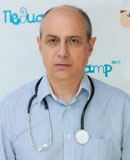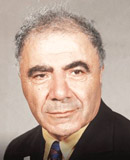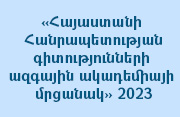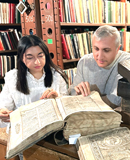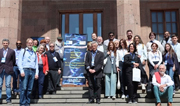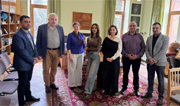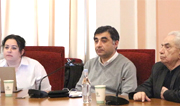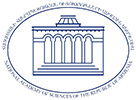 |
|||||||||||||||
|
|||||||||||||||
| Главная страница | Об Академии | Отделения | Организации | Члены | Связь с нами |
|
|
|
 Фонд развития науки НАН РА  Всеармянский фонд финансирования арменоведческих исследований 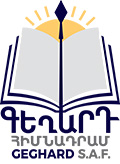 Научно-аналитический фонд Гегард 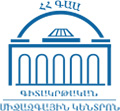 Международный научно-образовательный центр НАН РА  Фундаментальная научная библиотека НАН РА  Международная комиссия по присуждению международной премии имени Виктора Амбарцумяна  Национальный информационный пункт Армении HORIZON 2020  EURAXESS-Armenia Portal   Академическая научно-исследовательская компьютерная сеть Армении |
Новости / Архив
|
Анонсы
С 30 марта по 2 апреля 2025г. Институт молекулярной биологии НАН РА и Университет Макмастера (Канада) проводят передовой научно-исследовательский семинар под эгидой НАТО (Организация Североатлантического договора) на тему "Риски, связанные с малыми дозами радиации: текущие исследования и перспективы на будущее" (Президиум НАН РА, Круглый зал, пр. Маршала Баграмяна, 24) 15 апреля 2025 года в Ереване состоится Информационный день посвященный программе COST (Европейское сотрудничество в области науки и технологий) 29 апреля 2025г. НАН РА, Министерство образования, науки, культуры и спорта РА, Международный научно-образовательный центр НАН РА, Институт языка имени Р. Ачаряна НАН РА и Институт литературы имени М. Абегяна НАН РА организуют общеармянскую научную конференцию на тему "Армянский язык и армянская литература: тенденции развития, возможности популяризации и их отражение в учебном процессе" С 5-8 мая 2025г. Научный центр зоологии и гидроэкологии НАН Республики Армения и Ереванский государственный университет совместно организуют международную конференцию "Биоразнообразие, охрана природы и изменение климата" (Ереван, Здание Президиума НАН) С 5-9 мая 2025г. Бюраканская астрофизическая обсерватория им. В.Амбарцумяна НАН РА в Бюракане проводит 17-ый армяно-грузинский коллоквиум С 16 по 21 июня 2025г., Институт прикладных проблем физики НАН РА организует "4-ую международную научную школу по радиационной физике и смежным приложениям имени академика Алпика Мкртчяна" в городе Ереван С 23 по 25 июня 2025г., Институт прикладных проблем физики НАН РА организует "4-ую Международную научную школу-конференцию по акустофизике имени академика А.Р.Мкртчяна" в городах Ереван и Севан. Подробности на сайте: https://school.iapp.am/ С 8 по 11 сентября 2025г. Институт физических исследований НАН РА в Ереване проводит XIII Международнуя конференцию по магнитным и сверхпроводящим материалам (MSM25) Международный инновационный центр нанотехнологий СНГ (МИЦНТ СНГ) объявляет о проведении в 2025 году очередного Конкурса на соискание грантов и 18-й научной Стажировки для молодых ученых и специалистов из стран СНГ ՀՀ գիտության և տեխնիկայի զարգացման 2020-2024թթ. գերակայության ՀՀ կառավարության որոշման նախագիծ Публикации в прессе
|
 |
Сайт последний раз обновлялся: 16:24, 02/04/2025 |  |
|
Главная страница
- Об Академии
- Отделения
- Организации
- Члены
- Связь с нами
- Структура
- Члены президиума
|
|||||
|
© Copyright 1998-2025 Все права защищены. Сайт создан и поддерживается Академической научно-исследовательской компьютерной сетью Армении (ASNET-AM) Вопросы и предложения можете посылать на электронный адрес webmaster {[ at ]} sci.am |

![academy [@] sci.am academy [@] sci.am](images/email.jpg)





